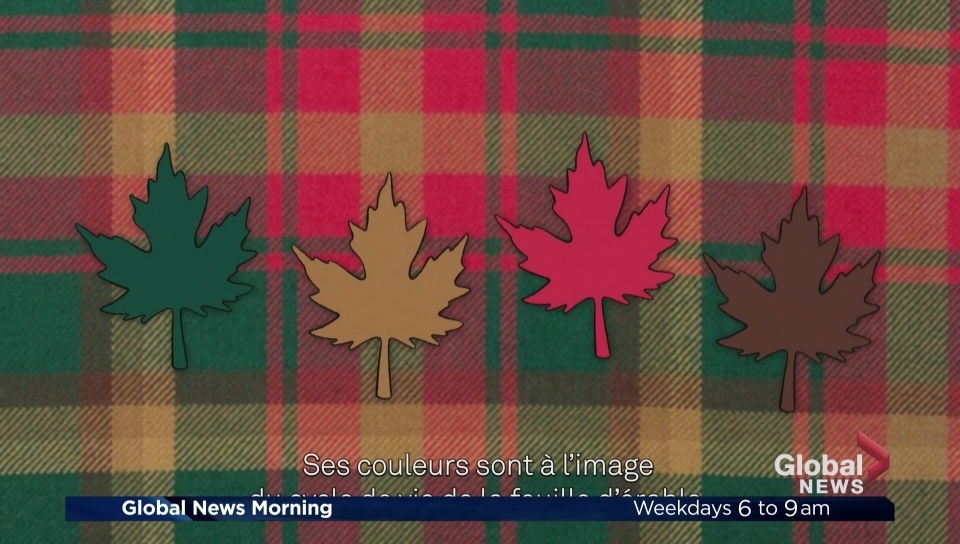The Scots have deep roots in Quebec and a woman in Ormstown, about an hour south of Montreal, is taking steps to ensure the Quebec government further acknowledges the history.
In 2019, Linda Janes began taking steps to have the province officially recognize the Quebec tartan.
“I think we should be proud of him and recognize that he is part of Quebec, that he is part of Quebec history,” he told Global News from his living room as he sewed a cloth mask made from the material.
Read more:
Tradition reigns supreme at Montreal Highland Games during intense heat wave
A tartan is a Scottish fabric traditionally associated with Scottish families, each family with its own design. Over time, however, tartans were also made for organizations, for example the military, as well as venues.
The Quebec tartan was designed for the province in the mid-1960s, “as were the tartans of other (Canadian) provinces for Canada’s Centennial,” said Bruce Bolton, former president of the Montreal Society of St. Andrew. . He is also a retired Black Watch (RHR) military commander from Canada, who has his own tartan worn by Scottish soldiers for centuries.
“Quebec tartan has never been officially recognized by the province,” said Janes.
She discovered the tartan in the 1990s. Soon after, members of the Quebec Women’s Institute, an organization that advocates for women’s issues, adopted it for formal occasions.
“People use it to make kilts, jackets, scarves,” he said as he showed off his own jacket made from the material.
However, it was not until 2019 that he began to investigate its history and discovered that it is even registered in the Scottish Register of Tartans.
“The name is Plaid du Québec,” he said.
Read more:
Female athletes compete for the first time at the Montreal Highlands Games
According to information on the website, “Plaid du Quebec designers circa 1965 are registered as Rotex Limited, believed to be a clothing manufacturer. The structure and colors of the tartan are based on the three horizontal divisions of the provincial coat of arms.”
Janes’ initiative is supported by her local provincial representative, Claire IsaBelle, who represents the Huntingdon constituency. Isabella filed a petition in the provincial legislature last fall for Quebec to officially adopt the tartan.
Scottish history in Quebec dates back four centuries, a reality marked in Montreal through various events, such as the annual Montreal Highland Games, the St. Andrew’s Ball, and institutions such as McGill University.

In 2017, the city received its own tartan.
“The St. Andrew’s Society put together a Montreal tartan from 1642, which was made up of various colors depending on the organizations in the city,” Bolton explained.
In 2003, the Quebec national assembly officially recognized Tartan Day, which is celebrated on April 6.
Janes’ push for the province to officially recognize the Plaid du Québec has the support of Christopher Skeete, parliamentary assistant to the prime minister for relations with English-speaking Quebecers.
“I think it’s important for us to recognize not only our French history,” he said, “but our unique history of Irish descent, Scottish descent.”
Janes believes that adopting the tartan is the right thing to do, even if she is not Scottish. He noted that his ancestry is part Irish, a fact underlined by a shillelagh (a walking stick associated with Irish culture) that stands in a corner of his living room.
He is hopeful that the tartan will be adopted. People have until February 10 to sign the petition.
© 2022 Global News, a division of Corus Entertainment Inc.
Reference-globalnews.ca